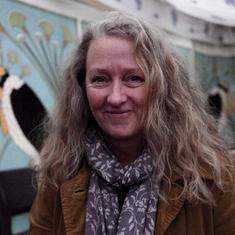It has been over a decade since he started singing in films, but Benny Dayal’s attitude towards fame has stayed the same: sing like there is no tomorrow.
Dayal got his break with AR Rahman’s Tamil film Sakkarakatti (2007), in which he gave voice to the zesty Chinnama Chilakamma. The pair’s winning collaboration continued for many more compositions, including Maduraikku from Azhagiya Tamil Magan (2007), Omane Penne from Vinnaithandi Varuvaya (2010), Koddu Potta (2010) from Ravanan and Kaise Mujhe from Ghajini (2008).
Numerous earworms with other composers followed: Yethi Yethi from Vaaranam Aayiram (2008), Badtameez Dil from Yeh Jawaani Hai Deewani (2013) and Ude Dil Befikre from Befikre (2016). The multilingual singer is working on his singles series, Swaganusar, and recently rolled out the devotional song Ganapati Bappa in time for the Ganesh festival.
“I remember going door to door and asking for opportunities as even to sing a chorus part, I cannot just go to someone and say ‘Hey I want to sing a lead song,’” Dayal told Scroll.in. “I climbed the ladder the way everybody does and got where I am today.”
How different is ‘Ganapati Bappa’ from a film song?
There is always a huge difference. Our Indian music comes from folk music and classical music. As a playback singer, utilising that classical aspect of singing becomes very rare. But singing of such spiritual music takes you back to your childhood days where you learnt classical music. Ganesh Chaturti is a huge spectacle in Maharashtra. Living in Bombay and singing a song for such an amazing occasion is an incredible feeling.
How did the project take shape?
I was on tour with Mr Rahman and Ashwin Srinivasan [the flautist], who is the composer of the song, approached me. I agreed at once.
It has been over a decade since you started singing film songs. How has the music scene changed since then?
It has moved forward in terms of the technology. Basically music is music and it is just the way you hear it now. The thing that makes you tune into the music today is the technology that is involved in making the sound more superior than what it used to be.
You have said that you like to be the underdog, and that being high-profile doesn’t fetch you more work.
I like to be an underdog because you are not very celebrated. Once you are celebrated, you become one of the professionals and one of the regulars. But for me, being an underdog keeps me grounded.
I always have that feeling that I am going to record a song today and I know that there is a chance that maybe my voice might not suit the song or it could be rejected. That keeps me wanting to do better because if you have that feeling in you, it makes you become focused and give your all every time. Your heart is such a pure place and sometimes when you know too much, you never let your heart speak. And music requires a lot of heart. So I just let it trip and let it go and every time I sing it I give it my best.
How did you enter the singing profession?
I definitely had a lot of ups and downs – a lot more downs more in the beginning. I have been rejected a lot to an extent where it just makes you feel very hopeless. Even to sing chorus, it was very hard in those days because people weren’t willing to take a risk. Then eventually Mr Rahman discovered me.
Any memories from your first recording?
My first recording was way before I got my break with Rahman sir. I was doing a lot of Christian devotional songs back then. Just the feeling of being inside the studio and letting that fire out of you – the fire that was always suppressed – was wonderful.
At what age did you know that singing was what you wanted to do?
When I was 13 or probably 14. I was actually a trained dancer in bharatanatyam, kuchipudi and mohiniattam. And then I started singing for a couple of stage shows and people came up to me and said, you sing so well. A lot of my friends used to tell me that they liked my dancing but they preferred my singing.
I couldn’t believe it because I was a dancer and that is what I was known for as a child. So I started singing and just for fun’s sake my mum started enrolling me in small competitions, which I began winning. Only then did I realise that I must be good at singing.
You sing in Tamil, Hindi, Telugu, Kannada and Gujarati. How do you manage?
Actually, that is very easy. They are all sounds. They are the same syllables mixed and matched here and there and they become words and languages. If you limit yourself based on language, you are creating a block. I listen to the tune carefully, write down the lyrics carefully and also sing it carefully.
How did your single series ‘Swaganusaar’ take shape?
In Swaganusaar, we tried to explore different genres through the series and at the same time show elements of swag. That is where the title comes from. Every song that you listen today, they all speak about swag. So like Swadh anusaar, we picked Swaganusaar.
Which are some of your favourite songs?
Kaise Mujhe Tum Mil Gayi from Ghajini, Badtameez Dil from Yeh Jawaani Hai Deewani, Bang Bang from Bang Bang, Tu hi to Meri Dost Hai from Yuvvraaj and Dum Dum Mast Hai from Band Baaja Baarat.
Was there any song that was particularly challenging?
Definitely Kaise Mujhe Tum Mil Gayi because it is not an easy song to sing. It is still one of the hardest songs. It is very challenging at an emotional level and at a technical level.









